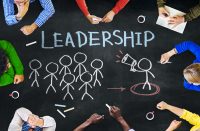Category: Learning & Development
Employees are valuing career development more than ever—it’s a sign that the company is willing to invest in their future. How are businesses approaching training today? What are their pain points, and what topics are being addressed in training?
The leaders across your organization can drive your organization forward or they can destroy its goals and ambitions. In fact, finding and developing great leaders for your organization are always the most important and relevant things you should be doing as a learning and development professional.
Employers are frequently using temporary staffing agencies to fill vacant, temporary, per diem, seasonal, and other positions. But what happens when the temporary agency isn’t complying with state law? Can the employer be liable? In a recent case, a superior court says yes.
Adding to yesterday’s post, here are some additional items you’ll want to include on your 2019 L&D budget.
Going global? Already there? English is still the lingua franca abroad, but this is taken for granted. Stepping into the ring with a limited perspective will prove detrimental to your current or future international business endeavors. It’s time for the English-only workplace to plug language-training programs into their LMS. Standing out among the competition depends on it.
While every single one of your employees doesn’t necessarily need to know how to code software and websites just yet, there are four tech-related skills that all your employees should have by now.
Did you know that organizations typically spend anywhere between $100 and $1,000 for training per learner per year? And while this amount tends to fluctuate for each organization based on its size and the level of training required per individual learner, it’s easy to see how quickly training costs can add up in just 1 […]
In a previous post, we talked about the benefits to both the employer and the employee of promotions. For the employee, while a promotion comes with greater responsibility, it also typically comes with greater prestige, seniority, authority, and compensation.
A promotion is a major achievement in any employee’s career. While this career milestone comes with greater responsibility, it also often typically comes with greater prestige, seniority, authority, and compensation. Promoting employees is a great way for organizations to better leverage employee competencies and boost employee engagement and satisfaction.
In yesterday’s post, we covered the most notable and lasting e-learning trends from 2018. Today’s post will cover notable e-learning technologies and forecasts you’ll want to know about. Continue reading to learn more.
The holiday shopping season is nearly upon us, and consumers are already overwhelmed. While the holidays are meant to be a time of good cheer, the reality is that pressures due to gift buying and travel often yield heightened emotions. What’s more, a month’s long string of low unemployment and strong consumer confidence across the […]












